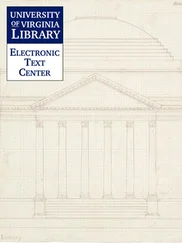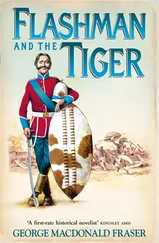But big deal, right? Despite this increase in manpower, the Warsaw Pact was still believed to have (at least) a ten-to-one numerical superiority in ready-to-fight divisions, and had a quantifiable advantage in aircraft, tanks, artillery, and mortars. It’s no wonder the West saw nuclear weapons as its only chance to equal the playing field—to find some way to compensate for NATO’s weakness in conventional forces. It was nukes or nothing.
• • •
The nuclear arsenalof the Cold War came in all shapes and sizes. It was a melting pot of mass destruction.
There were strategic weapons—the city-busters that detonated with a force equivalent to millions of tons of TNT. These could be launched from the ground or from submarines at sea, or they could be dropped from aircraft over the target, making up the three legs of the “nuclear triad.” This wasn’t quite developed in the mid-1950s, as both missile and submarine technology were not yet ready for prime time, but both sides could still certainly wallop the other with untold destruction.
Then there were the tactical nukes, sometimes called “battlefield” nuclear weapons. There were tactical nukes for fighter aircraft, artillery shells, surface-to-air missiles, bunker-busters, antisubmarine weapons, and even the man-portable Davy Crockett Weapon System, a watermelon-sized tactical nuclear warhead that could be set up anywhere and lobbed against enemy forces by a three-man team. (Its main drawback was that it was very inaccurate, which meant it was likely that the blast radius of the nuclear detonation could be larger than the range of the weapon. This wasn’t good if you were a member of the Davy Crockett team…)
And then there were atomic demolition munitions (ADMs), more colloquially known as nuclear land mines. The intended use of ADMs was to destroy key terrain features (bridges, dams, tunnels, mountain passes, irrigation and hydroelectric systems, industrial plants, factories, oil refineries, canals, railway junctions), preventing them from being used by the enemy—whether through actual physical destruction, or just by blanketing the entire area with radiological contamination. You could also use an ADM to redirect enemy forces, either away from important strategic areas, or toward your own forces waiting in ambush. Not a bad tool to have in your shed.
ADMs had important strategic utility, but they also bore significant complications. First, unlike other tactical nuclear weapons, which would be dropped, launched, lobbed, or shot out of a cannon on command, ADMs had to be pre-positioned in strategic areas before the war began, or at least long before the enemy arrived. This meant nuclear land mines would sit in the ground for months at a time, near important (but mostly civilian) infrastructure like bridges, tunnels, and so on. In Western democracies, it wasn’t all that easy to convince your population to just deal with a nuclear weapon buried in their backyard—one that was intended to blow them, their home, and their neighborhood to kingdom come if World War III broke out. The politics of ADMs would be one of the greatest challenges to their existence.
But not the only one. There was also a daunting technical challenge.
Central Europe gets very cold in the winter. Really, really cold. “Why the hell does anyone live here?” cold. “Oh my God, I can’t feel my face” cold. Go inside in October and don’t come back out until March cold.
And that could be a problem for nuclear land mines. They would be buried underground, where the cold would seep inside the device. The mine’s electronics, and the conventional explosives used as a trigger to set off the nuclear reaction, needed to stay within a specific temperature range in order to work. If the ADMs got too cold, the Soviets might roll right through your best-laid plans. Scientists and engineers in the West brainstormed ways to keep the internal components of ADMs at the correct temperature. Ideas were thrown around, some good, some not so much.
But it was the British that came up with what was by far the most idiosyncratic solution to the cold problem.
Blue Peacock.
• • •
The British War Officecalled for a nuclear land mine late in 1954, and work on Blue Peacock started that year at the Armament Research and Development Establishment in Kent—the same place where Britain’s nuclear program had been set up in 1947. Think of it as the British Los Alamos. By mid-1955, the concept for the ordnance was complete. The mine would be encased in a steel cylinder, about six feet in diameter, and weighing in at a whopping eight tons. The bomb itself would use the same design as the first British nuke, the Blue Danube (first tested in 1952 under the moniker Operation Hurricane—yet another cool code name). The specs called for a yield of 10 kilotons, which is slightly less, but in the same ballpark, as the Little Boy bomb dropped on Hiroshima. If detonated near the surface, Blue Peacock would produce a crater about 375 feet in diameter, but if it was buried 35 feet below the surface, that number would grow to 640 feet. That’s a pretty big hole in the ground.
If it looked as though a Soviet invasion of Western Europe was imminent, the British would move the Blue Peacocks to strategic areas. They could be either deployed on the ground (near, say, a railroad crossing, or a dam), buried underground, or submerged in a river or lake. The weapon could be detonated two ways. There was an automatic timer, with a fixed duration of eight days, that could be activated by a soldier if he and his unit needed to get the hell out of Dodge before the Red Army showed up. Or for a more controlled detonation, a three-mile wire could be strung from the mine to a command post in the rear of the battlefield. When the Soviets came charging in, you could ruin their day in the most spectacular way.
But what if you set the timer, left the area, and then the Soviets came in and found the mine before it had detonated? Couldn’t they just disarm it before it went off?
The British planned for that contingency. They made the mine tamper-proof. The hull of the Blue Peacock was pressurized, so that if anyone tried to get inside after it had been activated, it would kick off a ten-second timer. It also had tilt switches, so if the Soviets tried to move it, the jostling would set off the same ten-second timer.
Ten seconds isn’t a lot of time. I don’t care how fast you run, or even if you are in a speedy vehicle. If you trigger that timer, you are in deep trouble.
The only thing that remained was to figure out how to get around that pesky cold issue. It wouldn’t do much good to build all of these mines—not to mention base your broader war strategy on their effectiveness—and then have them crap out on you because it got too chilly in the German winter.
One idea called for wrapping the electronics and other cold-vulnerable components in fiberglass pillows. A relatively sensible idea. And kind of cozy, if you think about it. Maybe the British soldier who was in charge of the mine could snuggle up with a spot of tea and his favorite Dickens to wait out the Reds.
But if that was the only idea, this story wouldn’t have made it into this book. Oh no. The far more interesting plan involved live chickens.
British researchers noticed that the mine was spacious enough to hold fully grown chickens. This was more than just an entertaining observation (like, “Hey, I bet your head could fit inside that box”)—it could be a solution to the problem. Their body heat could keep the components warm enough to ensure that they would work if called upon. Throw a chicken or two into the mine, toss in some chicken feed, and seal it up.
Читать дальше











